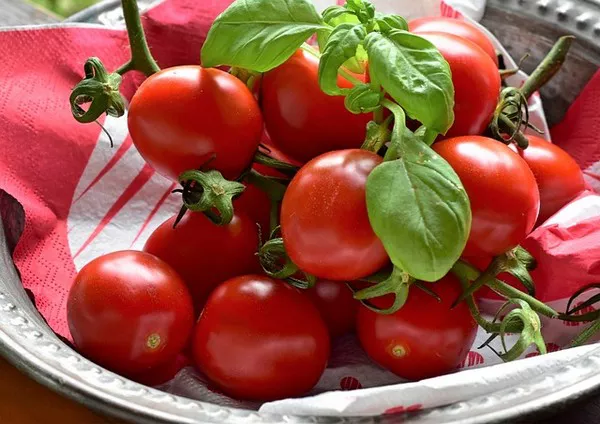Indoor gardening has gained immense popularity in recent years, with many enthusiasts turning to it as a sustainable and rewarding way to grow fresh produce year-round. Among the various crops cultivated indoors, tomatoes stand out as a favorite due to their versatility in the kitchen and nutritional value. However, indoor tomato cultivation presents a unique challenge: pollination. Unlike outdoor tomato plants that rely on natural pollinators like bees and wind, indoor tomato plants require a helping hand. In this article, we will explore the importance of pollination for indoor tomato plants and provide comprehensive guidance on how to effectively pollinate them.
The Importance of Pollination for Indoor Tomato Plants
Pollination is a crucial process for tomato plants, as it facilitates the transfer of pollen from the male reproductive organ (anther) to the female reproductive organ (stigma). This transfer is essential for the formation of fruits, which ultimately results in a bountiful tomato harvest. In outdoor settings, pollination is typically carried out by bees, butterflies, and other flying insects. However, indoor tomato plants lack access to these natural pollinators, making it necessary for growers to take on the role of the pollinator themselves.
There are two main types of tomato plants: determinate and indeterminate. Determinate varieties tend to produce fruit in a concentrated period, while indeterminate varieties produce fruit continuously throughout the growing season. Both types of tomato plants require proper pollination for fruit set. Here’s how you can effectively pollinate your indoor tomato plants:
Understanding Tomato Flower Anatomy
Before delving into pollination techniques, it’s essential to understand the anatomy of tomato flowers. Tomato plants have perfect flowers, meaning they contain both male and female reproductive organs. The male part, the anther, produces pollen, while the female part, the stigma, receives the pollen.
Shake and Vibrate
One of the simplest and most effective ways to pollinate indoor tomato plants is by using gentle shaking or vibration. This mimics the action of wind or insects and helps dislodge pollen from the anthers onto the stigma. Here’s how to do it:
- a. Choose a fine brush or a small electric toothbrush with soft bristles.
- b. Gently touch the brush to the open flowers, vibrating it for a few seconds.
- c. Repeat this process daily, as tomato flowers tend to open at different times.
- d. Be careful not to overdo it, as excessive shaking can damage the flowers.
Hand Pollination
Hand pollination is a more involved but highly effective method for indoor tomato plants. It allows for precise control over the pollination process. To hand-pollinate your tomato plants, follow these steps:
- a. Identify flowers that are ready for pollination. Look for flowers with open petals and visible pollen on the anthers.
- b. Carefully pick a mature flower with a soft, small paintbrush, cotton swab, or your fingertip.
- c. Gently transfer pollen from the anther to the stigma of the same flower, making sure to touch both organs.
- d. Repeat this process for multiple flowers.
- e. You can also transfer pollen between different flowers if needed, especially if you have a limited number of flowers in bloom.
Use an Electric Toothbrush
An electric toothbrush can be an excellent tool for indoor tomato plant pollination. It provides controlled vibrations that can effectively dislodge pollen. Here’s how to use an electric toothbrush for pollination:
a. Wait for your tomato flowers to open.
b. Turn on the electric toothbrush and gently touch it to the open flowers, ensuring you vibrate each flower for a few seconds.
c. Repeat this process daily to ensure consistent pollination.
Create Airflow
Indoor environments may lack the natural breeze that outdoor tomato plants benefit from. To remedy this, you can use a small fan to create airflow around your indoor tomato plants. The gentle movement of air can help disperse pollen and increase the chances of successful pollination.
a. Position the fan near your tomato plants, ensuring it provides a gentle and consistent breeze.
b. Avoid placing the fan too close to the plants to prevent excessive drying.
Encourage Insect Visitors
While indoor tomato plants don’t have access to natural pollinators like outdoor ones, it’s possible to attract certain beneficial insects indoors. You can release bumblebees or purchase mason bees, which are excellent indoor pollinators. Keep in mind that this method may require some additional setup and maintenance, but it can be a sustainable and effective solution for indoor tomato plant pollination.
Conclusion
Growing indoor tomato plants can be a fulfilling and sustainable endeavor. However, it’s crucial to understand the unique challenges they face when it comes to pollination. By mastering the art of indoor tomato plant pollination, you can ensure a healthy and abundant harvest year-round. Whether you choose to shake and vibrate, use hand pollination techniques, employ an electric toothbrush, create airflow, or even introduce beneficial insects, the key is to be attentive and proactive in ensuring that pollen reaches the stigma of your tomato flowers. With proper pollination, you’ll be rewarded with plump, juicy tomatoes that are a testament to your dedication as an indoor gardener.


